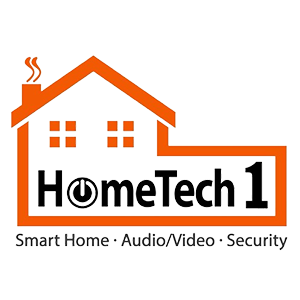Introduction
Imagine a home where you can unlock your door with your phone, turn on the lights automatically, and ask your virtual assistant to make coffee. When you’re away, a robot vacuum can clean your home, your thermostat can save energy, and you can monitor your home with security cameras.
A smart home is a place where your home anticipates your needs and helps you control your environment. Setting up a smart home automation can be challenging, but with the right devices and systems, you can make your life easier and more convenient. With just a few ready-made products, you can easily turn your home into the smart home you’ve always wanted.
Choosing a Smart Home Ecosystem
When building a smart home, it’s important to choose a compatible ecosystem. This will determine which devices you can use and how easy it is to control them. Popular ecosystems include Amazon Alexa, Google Assistant, Apple HomeKit, and Samsung SmartThings. Each has its own strengths and weaknesses, so consider your needs and preferences when making a decision.
Hubs and Smart Home Devices
To control your smart home devices, you’ll need a hub and smart speakers or displays. These devices allow you to use voice commands or apps to control your lights, thermostats, and other appliances. Consider using both smart speakers and displays for better voice recognition and accessibility for everyone in your home.
Wi-Fi and Smart Home Devices
Most smart home devices need a strong Wi-Fi connection to work. Newer Wi-Fi technologies like Wi-Fi 6E offer faster speeds and better security. To avoid Wi-Fi congestion, choose a good location for your router and consider using a mesh system. Always use a strong password to protect your Wi-Fi network. Some smart home devices can also use Bluetooth or special hubs, which offer different benefits and drawbacks.
Smart Home Automation with Smart Plugs
Smart plugs are a simple way to add smart home automation to your existing devices. By plugging in your lamps, fans, or coffee makers, you can control them using your phone or voice commands. Smart plugs can also help you save energy by turning devices on and off at specific times.
Smart Light Bulbs
Smart light bulbs let you control the colour, brightness, and temperature of your lights. You can set them to turn on and off automatically or control them using your phone. They’re easy to install and can help you create the perfect atmosphere for any activity. If you don’t want to replace your light bulbs, you can use smart wall switches. These switches allow you to control your existing lights using your phone or voice commands. However, installing smart wall switches involves working with electricity, so it’s best to hire a professional for this task.
Smart Home Installation: Smart Thermostats
Smart thermostats allow you to control your heating and cooling system from your phone. They can automatically adjust the temperature based on your schedule and location. Some models even use sensors to ensure even heating and cooling throughout your home. Installing a smart thermostat is generally easy, but it requires working with low-voltage wiring and may involve some drilling.
Smart Home Security
Smart locks allow you to control your door locks using your phone or voice commands. Smart doorbells let you see and speak to visitors before opening your door. These devices can help improve your home’s security and convenience. Security cameras can help you monitor your home and property. Indoor cameras can provide a 360-degree view of your rooms, while outdoor cameras are built to withstand weather and can include floodlights. You can choose between wired or wireless cameras, depending on your installation preferences.
Troubleshooting Smart Home Devices
If you’re having trouble setting up a smart home device, try these tips:
- Check your Wi-Fi connection. Make sure your phone and device are connected to the same Wi-Fi network and band.
- Restart your device and router. Sometimes, a simple restart can fix connection issues.
- Search online for help. You might find solutions or workarounds for specific problems.
- Factory reset. As a last resort, you can factory reset your device and reinstall the app.
Conclusion
The smart-home world can be overwhelming with so many systems, standards, and devices to choose from. That’s why we created this guide to help you explore your options, explain the terms, and understand the impact of your choices. With some planning, you can make the process much easier. Home Tech1 provides full guidance on smart home automation. Our experts carefully handle the installation and are available to help if any issues arise.


